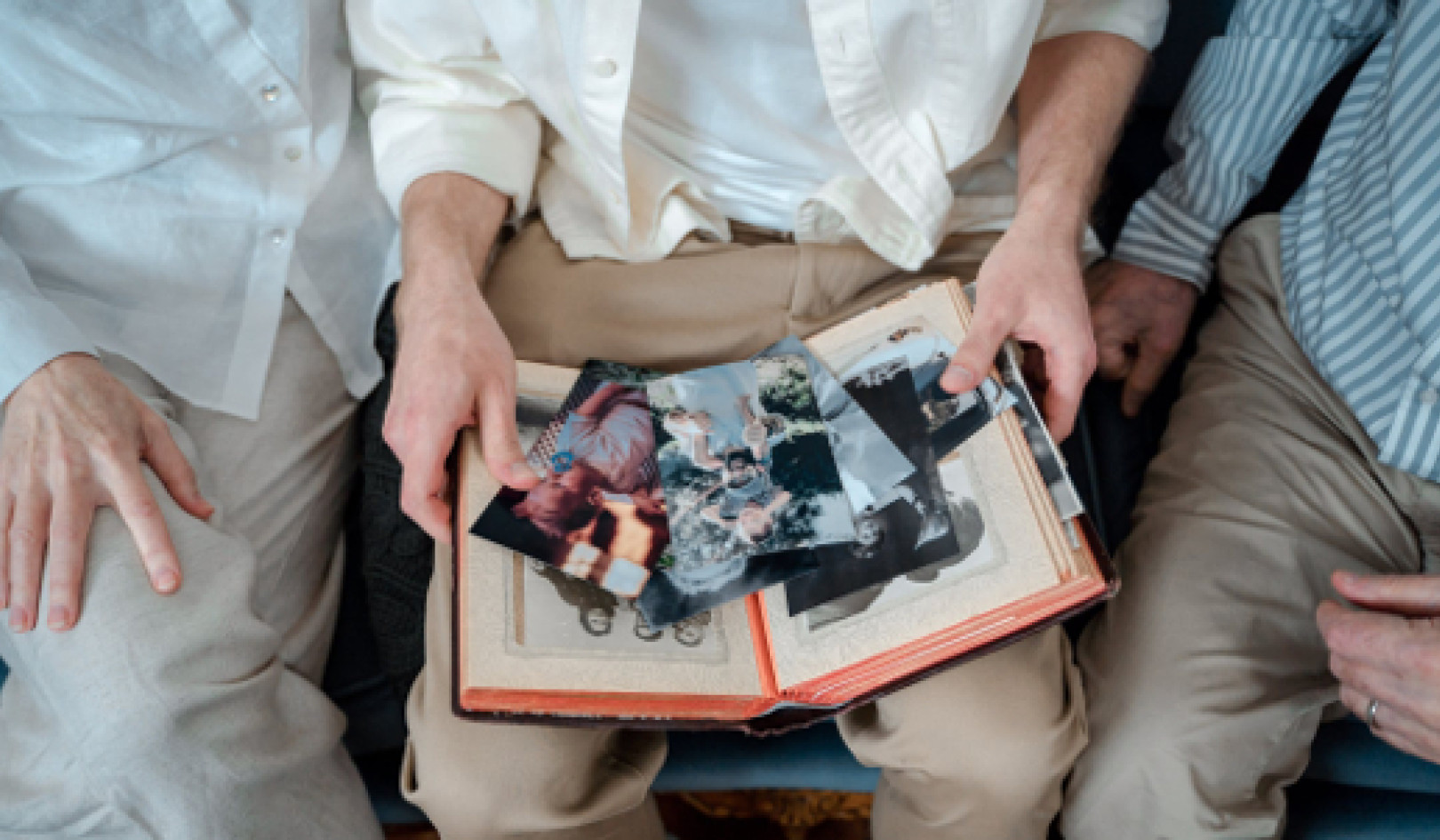The Client
A middle-aged woman who had spent most of her life alone visited me one day. The consultation was dominated by her fantasies about being followed by strange men and a general sense of being persecuted. She had a Pisces Ascendant, with Neptune in exact conjunction to her Descendant. According to astrological theory, this would give one the tendency to have fantasies in relation to other people. When she left at the end of this rather difficult session -- she appeared to be something of a borderline case -- I decided to go shopping. After some minutes, I opened the door to leave my office, only to find the client talking to herself on the stairs. Acutely aware that it might seem like I was following her, I smiled weakly and closed the door again, waiting until I saw her depart in the direction of the bus stop. I then left, taking a new route into town so as not to pass the bus stop, and after about a 20-minute brisk walk, I arrived at the town square. As I entered the square, the bus drew up and my client stepped out, virtually bumping into me. She took one look at me, abruptly turned around, and walked rapidly in the opposite direction!
Were the stories this woman had told me about being followed true or not?
Measuring Truth
One of the difficulties about ascertaining truth is to define the yardstick with which to measure it. Scientists have developed complex systems of measurements that have enabled them to map out the material world and describe its workings in intricate detail. Traditionally, there has been a clearly defined division between subject (the inquiring mind) and object (the outer reality). Although the belief system of science is no more than a working hypothesis under constant revision, it has functioned well. However, as science in the 20th century examines extreme states in the material world -- subatomic particles and phenomena in the deepest reaches of space -- the subject-object division is beginning to be undermined. On a simple level, a researcher intent on a particular pursuit will automatically make choices that favor an intended result. And on a more subtle level, such as in the sub-atomic world, the actual intention of the researcher can be scientifically shown to affect the outcome of the research. This means that modern science has now become aware that it must take the condition of the subject into account when measuring reality.
Cold Fusion Confusion
On March 23, 1989, at the University of Utah, researchers Pons and Fleischmann1 claimed a world-shattering discovery. The phenomenon of cold fusion was confidently announced to an astonished world. Instead of the several hundred million degrees normally considered necessary to fuse lighter nuclei into one heavier nucleus, thereby creating vast quantities of energy, these two researchers maintained that they had created fusion at room temperature. Initially this cold fusion process was apparently successfully replicated in France and in other laboratories around the world. Yet, at a subsequent conference in May, the process was discredited, and reports of successful replication dwindled. How could reputable scientists make such a mistake?
It is an interesting fact that on March 23, 1989, Saturn and Neptune were in tight conjunction. This conjunction, which recurs once every 36 years, lasted most of the year. Astrologers associate Saturn with form and Neptune with dissolution; and on a more abstract level, Saturn relates to experienced fact and Neptune to fantasy and fiction. The conjunction occurred in the sign of Capricorn, which is connected with boundaries in the material world and the drive to overcome them (and on a more personal level the ambitious urge to rise in status). As Saturn merged with Neptune, an astrological picture arose of the fusion process and the subsequent confusion about cold fusion, as well as the loss of status for the two research scientists.
Was the whole thing fact or fiction? Such is the nature of Neptune, which casts its misty cloak around everything it touches -- the truth may never emerge. Perhaps cold fusion really did happen and can only repeat itself during the next conjunction of those two representatives of the concrete and sublime -- Saturn and Neptune. The important lesson of this event that shook the scientific world was its concern with the nature of reality, the nature of illusion, and the difficulty of establishing objective truth.
As Above, So Below
The basic principle of astrology is that the smallest thing in the universe is subject to the same process as the largest.2 The same rules apply for both the micro and the macro, and indeed an action in one sphere will reflect an action in the other. In other words, the force that affects us in our daily life is a reflection of the primal force that affects the universe. Furthermore, time and the physical world are deeply interconnected. When we try to understand the physical world, we have a spatial experience of a reality in a state of constant flux, and time is the convention that enables us to grasp this flux. This astrology is unique in that it applies rules of correspondence between the flux of time and of space, linking them through planetary movement to human character and history.
Human character is linked to this flux through consciousness. The degree of individual consciousness is the factor that speeds up or slows down the unfoldment of personal fate. In this context, fate is in no way fixed, but instead is interactive with consciousness. If past actions create fate in the present, then so do present actions have their effect on the future. This puts the individual much more in control of the time and its material consequences in the world than opponents of astrology might imagine.
Sensory Filters
Experience of the outer world is completely dependent on the physical senses and mental convictions of the individual. Apparent reality is entirely relative to the consciousness of the experiencer. Practicing astrologers are well aware of how different psychological theories reflect the horoscopes of the psychologists who founded them; how literary themes reflect the lives of the author; how films reflect the mind of the director; and how actors choose roles reflecting their planetary transits. Every impression has to pass through mental and physical filters unique to each individual. Therefore, considering the subjectivity of personal truth, the most one can hope for in establishing truth is a broad agreement shared by as many people as possible about what standards to apply to reality.
The Battle for Truth
The more people who embrace a belief system, the more power it has. That is why preaching was such an important part of the Christian religion. That is why defenders of the scientific model, like the English professor Richard Dawkins and the late American Carl Sagan, have invested so much energy defending the tenets of scientific belief and doing their utmost to discredit what they regard as the superstition of astrology. They understand that the real battle for truth is in winning the hearts and minds of the people. Fighting for beliefs is essential to maintaining power and influence.
For astrologers, the desire to defend their beliefs is natural though often misguided. Personal identity is often inextricably connected with the beliefs one embraces, and arguments are consequently infused with emotion, because a defense of beliefs often constitutes a defense of personal identity. It is normally the case that people cling to their beliefs during the whole of their adult lives, especially if their work is centered around them. In the last analysis, great changes of thinking occur as old proponents of ideas lose influence and die and proponents of new ideas come into prominence.
Unity in Duality
As we begin to integrate the philosophical consequences of the scientific discoveries of the past century, a transition is occurring. Relativity theory shows the interactivity of subject and object, matter and energy, body and mind.3 The awareness of unity within duality is arising, and it is in this awareness that a meeting point can be found between the worlds of rational science and less-rational astrology. Astrology cannot be proven satisfactorily by using the methods of thinking founded upon dualistic thought. But then there are aspects of modern science that do not respond well to dualistic logic either. Using old-fashioned scientific methods and insisting upon replication, without considering the ever changing cycles of time and its influence on the process, can lead both the modern scientist and the astrologer astray. Indeed, the successful practice of astrology is in fact dependent upon the awareness of interactivity between the mind of the astrologer and the object of his or her consciousness.
Subjective Truth
Astrology ascribes meaning to planetary events and assumes that the energy moving the universe has a kind of inherent intelligence. The astrologer also maintains that there is a natural resonance between the evolving motion of the universe and the development of the human soul. I believe this to be a very effective working hypothesis, and the astrologer who puts aside his or her doubts about this hypothesis' effectiveness and embraces it wholeheartedly is rewarded by this intelligent universe. On the other hand, the clinical and objective approach of the skeptic will lead to very poor results in the interpretation process, while the enthusiastic believer will find him or herself in dialogue with a supportive universe magically geared to his or her development.
The Consultation Moment
Consider the story mentioned earlier. I see clients daily and always use their birth chart in combination with the chart for the moment of their arrival. Subsequently, I have found major correspondences between these two charts. One client born in January 1950 was a Capricorn with the Moon in Sagittarius and the Ascendant in Aries. This client arrived for the consultation in January 1996 when the Sun, Moon, and Ascendant were in the exact same combination. The chances of this happening are 1:1728. As if that were not enough, Mercury was retrograde at 29° Capricorn in both charts. This combination has only happened four times in the client's life -- at birth, January 1963 and 1970, and the day of the visit to the astrologer. Yet this kind of parallel is a normal occurrence in consultations.
The Unified Field
Astrologers -- and indeed everyone else -- create a world around them that reflects their methods for seeing the world. And the world responds intelligently. Events unfold in discrete harmony with the beliefs and conceptions of the observer. It is in the nature of things that events normally confirm convictions. Where the scientific approach to the consultation might see the client as the object, the non-duality approach sees the sensory and intellectual interaction of the astrologer and client as a unified field, which affects each individual equally. And in this unified field, where consciousness focuses its attention on events, meaning arises. Therefore, objectifying astrology by trying to prove it removes the observer from the very field of consciousness in which astrology works so effectively. Conventional scientific methods may be effective at quantifying the stationary observable universe, but in the mysterious and invisible universe of consciousness -- a world that has its parallels in the field of quantum mechanics -- the concepts of relativity and paradox come into their own.
Shared Reality
The truth of astrology will be accepted when the majority of people embrace it as a part of their reality. We are now very close to this happening, and, in all probability, future generations will accept the natural correlation between humankind and cosmos in much the same way that we believe in psychology today. It is not a question of whether or not astrology is objectively true, but whether it will become a generally accepted representation of reality. Whatever the case, it should be clear that what the individual experiences as reality is not objective reality. Individually experienced reality does not exist before the individual experiences it and will not exist afterward. In other words, the individual creates his or her own private experience of reality. This is why shared beliefs are so important. The more people who agree to share a certain interpretation of reality, the more that reality is validated. This does not, however, make that reality objectively true. Astrology is simply a very good basis for constructing reality because it is based on the observable planetary system of which we are a part.
The Magic of Astrology
There is no doubt that astrologers are able to produce irrefutable examples of the effectiveness of astrology, among them being wonderful correlations from their own lives, and numerous obscure predictions that have come true. But their reality is based on the same rules as the female client described earlier. They are being followed -- by the interaction of the world with their own belief systems.
It is perhaps more relevant to ask whether the system in question enriches our lives, whether it harms or does good, than whether it represents truth. The world is vast, and the capacity to extract meaning from it unlimited. Astrology is one way -- a very effective way -- to do this. So is astrology true? In an absolute sense, no, but relatively, yes, of course. It is arguably more effective than any other system for mapping out the character of events and their significance in time. It is not an infallible system, but it has its moments: as when Michael Baigent predicted so accurately in 1983, in the book Mundane Astrology, that the Soviet Union would experience from 1989 to 1991, "some basic restructuring of the nation... a change ...with regard to the leadership and the style of rule. It would appear possible that this period will herald some new revolution in Russia which would restructure the country dramatically...the tight command structure will fail and the country will collapse back into the numerous autonomous states that it once was."4
Yes, there are times when it feels like a privilege to be granted insight into this ancient art.
©1998 Adrian Ross Duncan - all rights reserved
References and Notes:
1. For more information about the extraordinary saga of cold fusion, read The Ballad of Pons and Fleiichmann by Thomas Gieryn, 1992. This story was originally published in a science magazine called The Tech, on Tuesday, February 6, 1990, Vol. 110 (year in review), p. 7.
2. For a very succinct analysis of the philosophical basis of astrology, read Tai Situpa XII, Relative World, Ultimate Mind, Boston: Shambhala Publications, 1992.
3. For a full treatment of interdependence, read Tibetan Psychology and Psychotherapy by Tarab Tulku XI. This is a private publication available from Lene Hanberg, phone +45 4586 2027.
4. Michael Baigent, Nicholas Campion, and Charles Harvey, Mundane Astrology, London: The Aquarian Press, 1984, pp. 444-45.
 Book by this author:
Book by this author:
Astrology: Transformation & Empowerment
by Adrian Ross Duncan.
About The Author
 Adrian Ross Duncan is a full-time practicing astrologer. For seven years he was both president of the Copenhagen Astrological Association (Ekliptika) and ran AstrologSkolen, a finishing school for consultant astrologers. He is the author of Doing Time on Planet Earth and developed WOW - World of Wisdom; Horoscope Interpreter, as well as Astrology for Lovers, user-friendly astrology programs. You may visit his Website at http://wow.world-of-wisdom.com
Adrian Ross Duncan is a full-time practicing astrologer. For seven years he was both president of the Copenhagen Astrological Association (Ekliptika) and ran AstrologSkolen, a finishing school for consultant astrologers. He is the author of Doing Time on Planet Earth and developed WOW - World of Wisdom; Horoscope Interpreter, as well as Astrology for Lovers, user-friendly astrology programs. You may visit his Website at http://wow.world-of-wisdom.com























